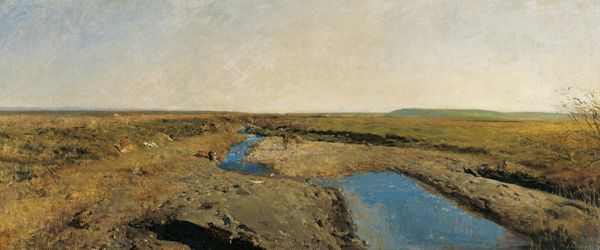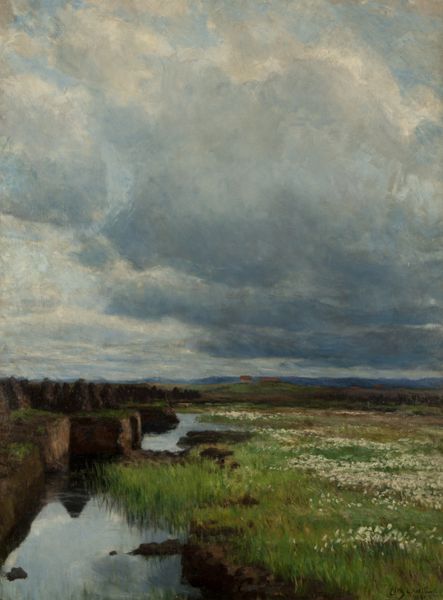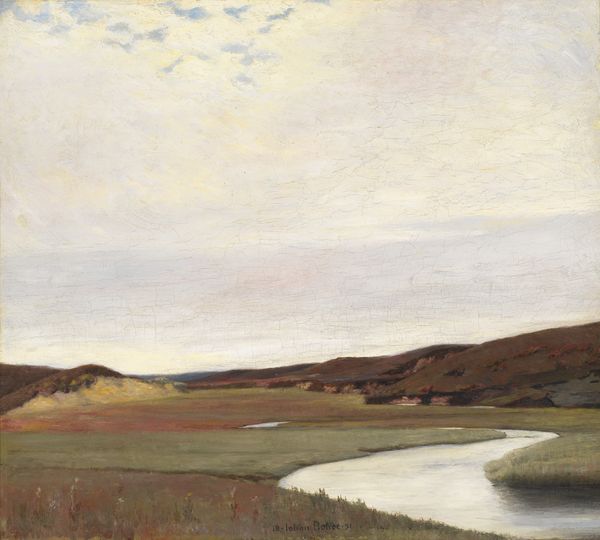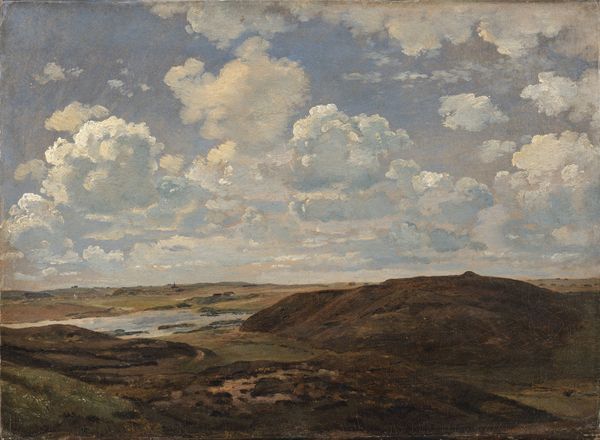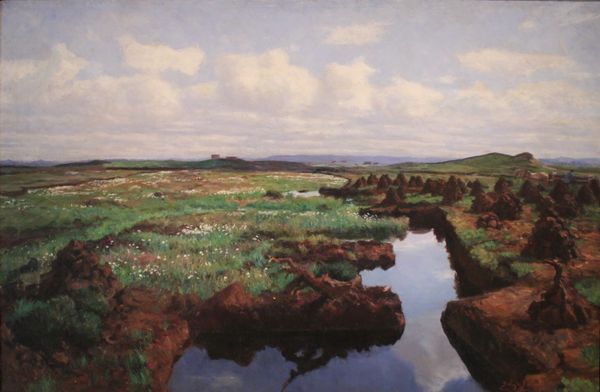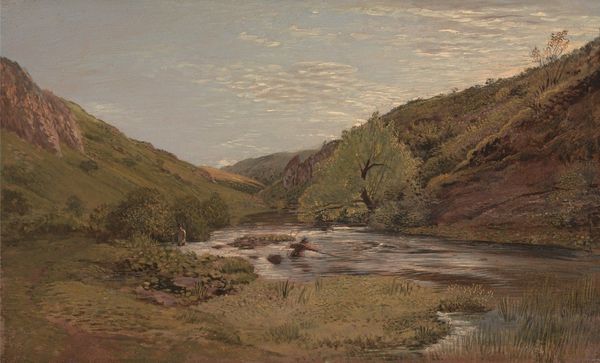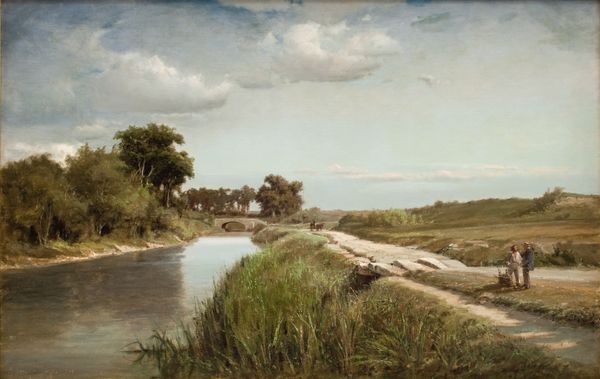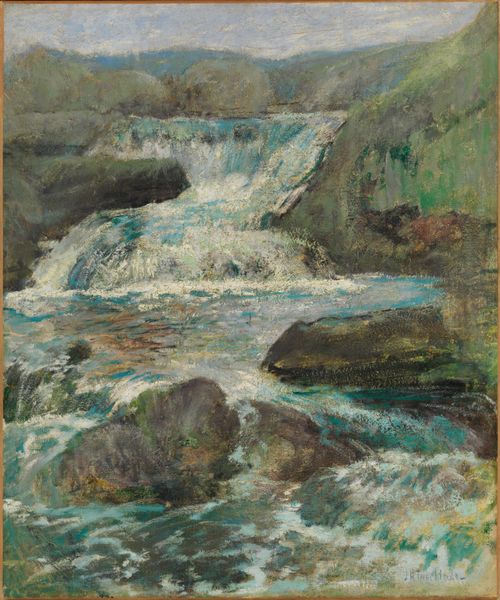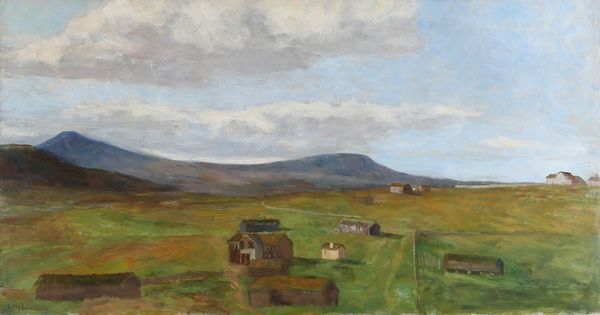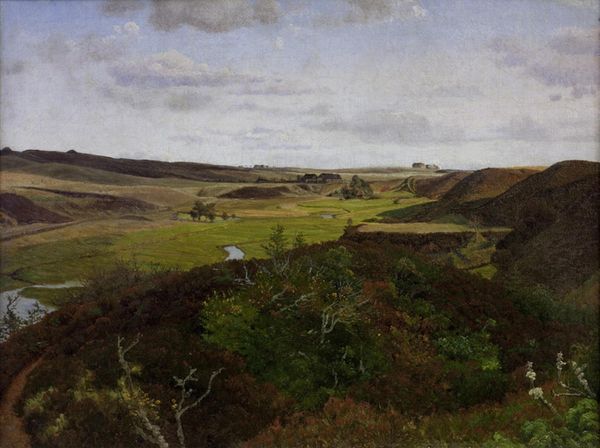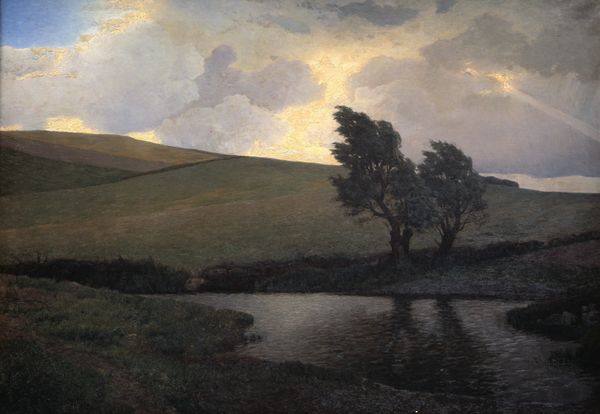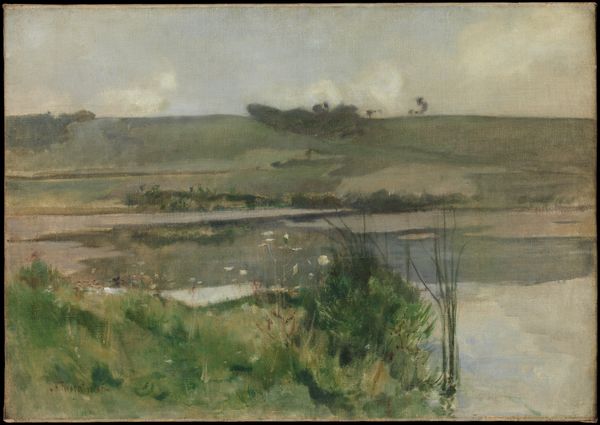
Copyright: Public domain
Curator: It’s quite a tranquil scene. This is "Høyfjell," an oil-on-canvas work by Kitty Lange Kielland, completed in 1907. The title, by the way, translates to “High Mountain” or “Mountains.” Editor: Yes, "tranquil" sums it up nicely. The materiality, especially the thick impasto work, contributes to that sensation—you can almost feel the weight of the water and the ruggedness of the rocks. Curator: Indeed. Kielland's process of plein-air painting—taking the canvas directly to the location—was pivotal to Naturalist art. What is particularly noteworthy about her artistic project is that she studied with landscape painters, against the backdrop of limited institutional opportunities for women. Editor: The context really is compelling. Looking at the rugged texture and the visible brushstrokes of the oil paint reminds us of the labor involved and challenges this idea of “high art” by rooting the image in a specific time, place and weather. It evokes an honest, material record of a fleeting encounter between the artist, her materials, and the landscape, right? Curator: Precisely! And what I appreciate is how Kielland presents a very naturalistic representation of Norway through the language of Impressionism, with its softer forms. I wonder about its public role at the time? Editor: It does reflect a kind of evolving Norwegian national identity. In many ways, Kielland was picturing the spirit of a people tied to the land in a painting displayed, reproduced and eventually consumed. How much of a Norwegian mythos would you say she perpetuated? Curator: She definitely contributed to it. Yet, I would also argue she brought in a rare personal interpretation, defying many expectations linked to the image of that land. The muted palette and horizontal composition create a soothing effect, almost melancholic. Editor: Well, considering how Kielland situated her own life in an important cultural moment, it becomes essential to analyze both the final artwork, its mode of making, its exhibition context and, ultimately, its circulation. Curator: I concur. Thinking through the politics of the imagery really helps to appreciate Kielland’s position as both a shaper and a product of the aesthetic values of her time. Editor: I agree, by emphasizing both the image itself and also the way this object was materially realized and then perceived.
Comments
No comments
Be the first to comment and join the conversation on the ultimate creative platform.
